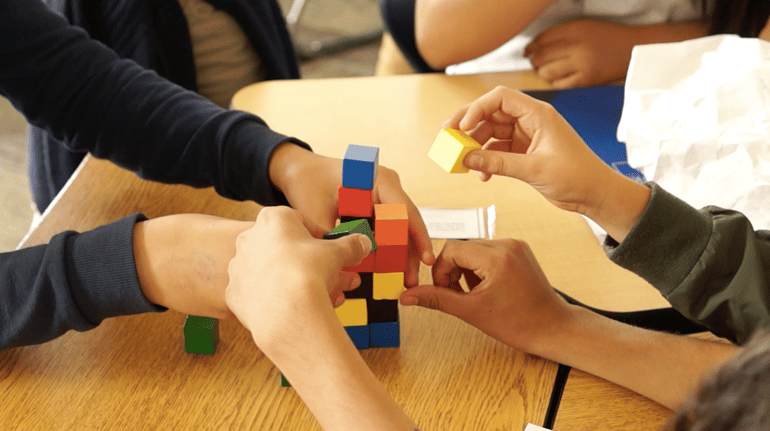Last week Facing History announced the two grand finalists for the 2017 Margot Stern Strom Innovation Grants! Jackson Westenskow from Aurora, Colorado and Catherine Epstein from Boston, Massachusetts will receive $2,500 to work with Facing History on promoting their lessons to teachers everywhere. Their lessons will debut this spring. In the meantime, read how Jackson Westenskow uses an innovative game to teach hard empathy to his students. And make sure to read about Catherine Epstein's project!

When I was younger, the borders of our country never really concerned me. Immigration was as foreign to me as the countries my ancestors came from more than 150 years earlier. If someone had asked me how I felt about immigration, I suppose I would have said something like, “I don’t know much about it. Maybe people should stay in the country they came from.”
My feelings weren’t born so much out of willful ignorance, but because I didn’t have a reason to learn about immigration. I didn’t have a reason to understand what immigrants went through.
Then I spent two years living on the Texas/Mexico border, volunteering to teach immigrant families in their homes. I learned Spanish and became familiar with their culture and traditions. I met new people on the street and in the bodegas. I learned people’s stories and about their hopes and dreams.
Today, if you ask me how I feel about immigration, you better have some time in your schedule to have a deep dialogue about the many different sides of the issue, the complexities of the debate, and especially about the real impact immigration has on people. Teaching immigrant families gave me the opportunity to learn “hard empathy,” or how to relate to another person’s perspective when you have little to no background or shared experience with that person.
But not everyone has the ability to spend two years living with people from a different background, in an unfamiliar culture in order to understand another person’s perspective. So, how do we teach students to experience something they haven’t (or can’t) experience?
Games!
Games aren’t simply distractions from hard work. Games situate players in unique, challenging, and purposeful circumstances where they must solve problems (often as part of a team) in order to achieve a goal. Through games, we take on a realistic role, we face an event or situation as if it were really our own personal experience, but we interact in a playful environment with low stakes.
This is where “Empathy Builders,” a cooperative game where players build empathy by building a tower, comes in. Each player has a unique condition written on a card that must be met in order to win the game. They take turns silently gathering blocks, building a tower, or taking blocks down from the tower, all without explaining their actions. Eventually, players switch cards, and slowly begin to understand why other players are acting the way that they are. Only when they take on the perspectives of the rest of their team can they “beat the game.” Only when they trust that the actions other players are taking are for the good of the whole, do teams begin to make progress.
When I first introduced “Empathy Builders” to students they were engaged, thoughtful, and focused. They began to realize what made success possible. They identified what made the progress challenging. They shared insights about how groups must work together if they want to create something.
One student explained, referring to the player next to her, “At first I couldn’t understand why she kept taking my blocks down. I was frustrated because I didn’t know what she was thinking. Then I saw her card and understood why she made the choices she did.”
When students make statements like these, it is easy for them to make connections to misunderstandings between peer groups, debates raging within government or challenges facing our global community. If we want to create a better future, we must understand the perspective of others.
“Empathy Builders” has grown from a simple block building game to include scenarios about World War II, the healthcare debate and many other topics, but the hope is that teachers can use the base game to teach students the skill of taking on other perspectives and practice identifying other people’s points of view. Ideally, teachers adapt the gameplay structures to their own content and modify the mechanics to fit their students’ learning goals.
I have used this game with teachers, students, and youth groups, and each time I have seen fun and frustration. I have seen engagement and epiphanies. And afterward, each group has a new context and new language to discuss understanding, perspective, and empathy.
Today, with so many viewpoints wishing to be heard, people need to understand each other. When our students are pressured to post all of their thoughts on social media, we must teach them how to listen. But perhaps most of all, we can use the power of gameplay, now more than ever, to help all of us show a little bit more empathy.
Make sure to watch Jackson's original proposal video and read Catherine Epstein's post about her project. We look forward to sharing their final lessons this spring!


